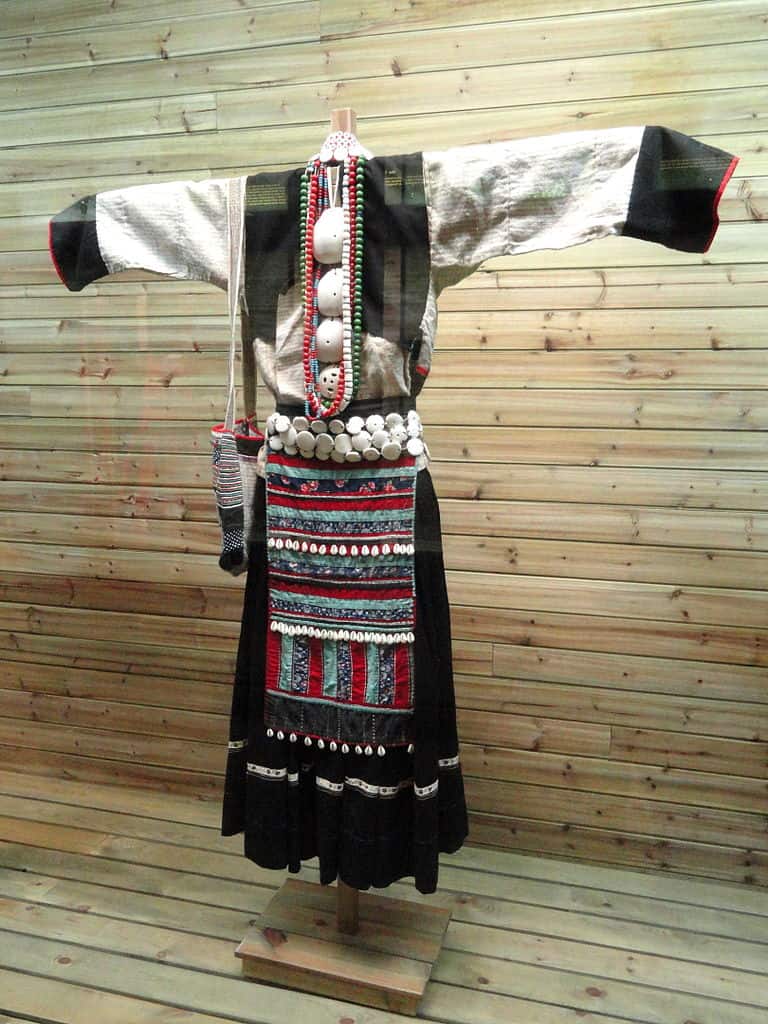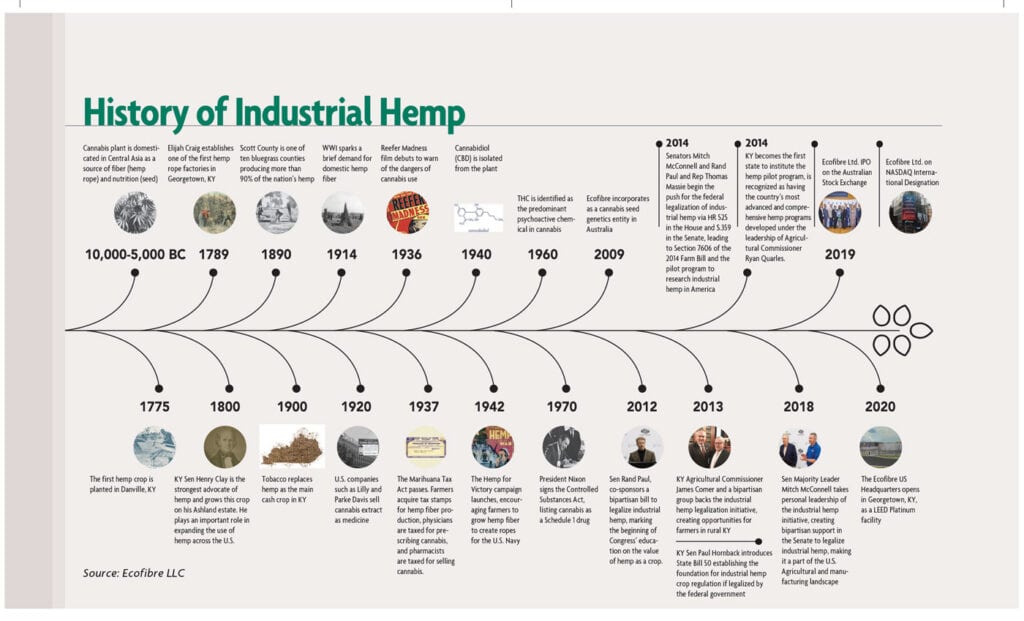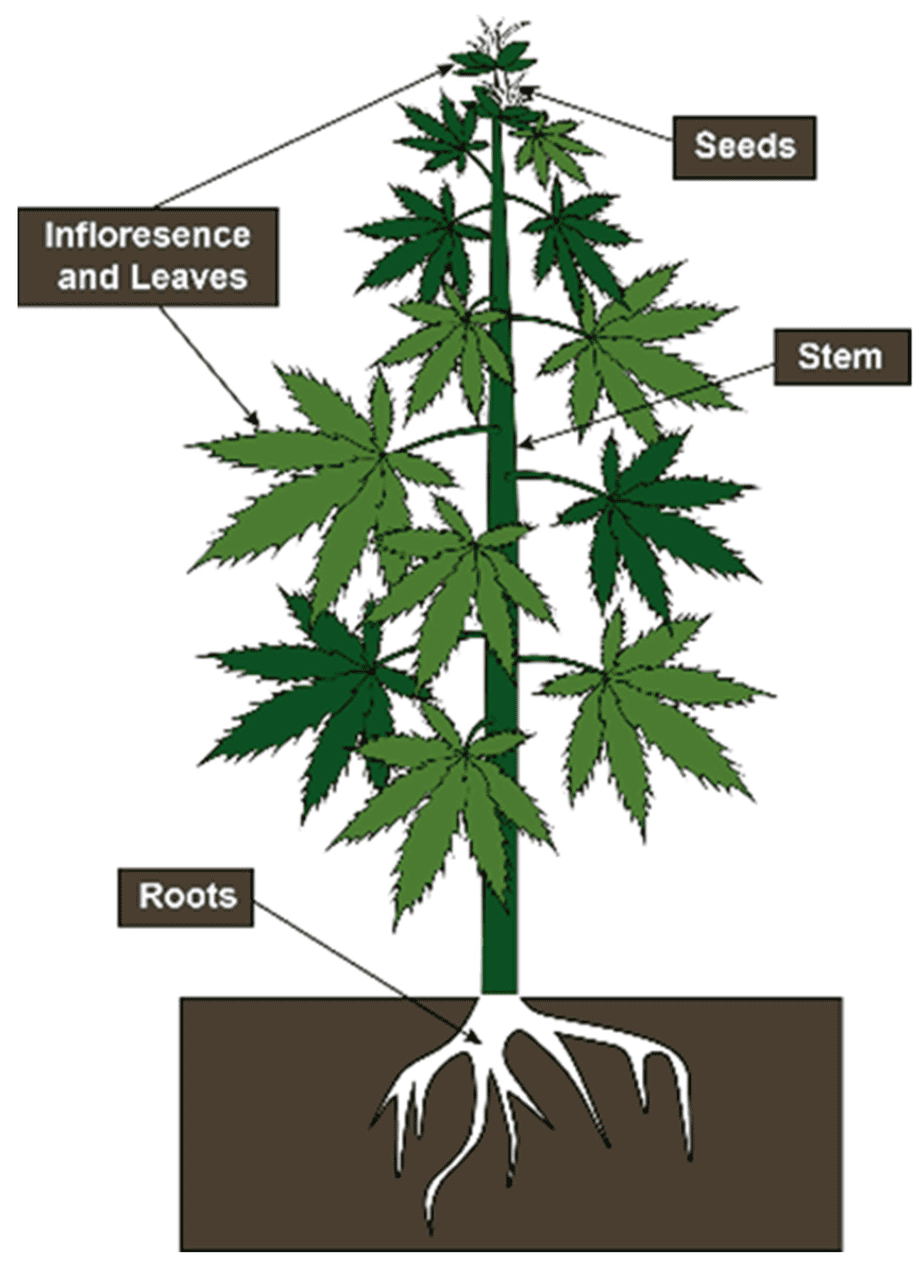Imagine a world where the versatility of hemp meets the rich tapestry of traditional clothing. This captivating article explores the fascinating realm of cultural integration, showcasing how diverse cultures from around the globe have seamlessly woven hemp into their traditional attire and ceremonial garments. From ancient civilizations to modern-day tribes, discover the intricate patterns, vibrant colors, and deep-rooted cultural significance behind the use of hemp in traditional clothing. Step into a realm where fashion, history, and tradition intertwine, painting a vivid picture of our shared human heritage.
Cultural Significance of Hemp
Hemp, a versatile plant known for its numerous uses, holds significant cultural importance in various societies around the world. From traditional clothing to ceremonial attire, hemp has played a vital role in shaping the cultural heritage of numerous civilizations throughout history. Understanding the historical uses and symbolism of hemp in different cultures can provide valuable insights into the deep-rooted connections between human societies and this sustainable resource.
Historical uses of hemp in traditional clothing
For centuries, hemp has been utilized in the production of traditional clothing across cultures. Its strong and durable fibers make it ideal for creating garments that can withstand wear and tear. In ancient China, hemp fabric was a popular choice for clothing due to its breathability and ability to regulate body temperature. Similarly, Japanese culture embraced hemp for its resistance to mildew and its suitability for crafting traditional kimono attire. In India, hemp was revered as a sacred plant, and its fibers were used to create garments associated with religious rituals and traditions. In Nepal, hemp fabric has been ingrained in the country’s cultural identity, with techniques passed down through generations.
Symbolism of hemp in various cultures
Beyond its practical applications, hemp holds symbolic significance in many cultures. In Chinese culture, hemp symbolizes strength, longevity, and good luck. Its association with growth and abundance further reinforces its positive symbolism. In African cultures, hemp represents creativity and resilience, often incorporated into ceremonial attire and tribal regalia. In European cultures, hemp symbolizes a connection to nature, embodying sustainable practices and a reverence for the environment. Indigenous cultures around the world also consider hemp to be a sacred plant, representing a deep bond with the earth and ancestral traditions.
Hemp Fabric Production
Understanding the process of cultivating and manufacturing hemp fabric provides insights into the quality and durability that make it a favored material for traditional clothing.
Traditional methods of cultivating hemp
Traditionally, hemp cultivation involved careful selection of the finest seeds, soil preparation, and manual harvesting. Different regions had their own distinct techniques, with farmers often relying on generations-old knowledge to ensure optimal growth. Hemp plants require minimal water and pesticides, making them an environmentally-friendly crop that can thrive in diverse climates. This sustainable cultivation process contributes to the eco-friendliness of hemp fabric production.
Processing and weaving techniques
Once harvested, hemp fibers undergo various processing techniques to transform them into a usable form. This includes retting, a process in which the stems are soaked and left to decompose, allowing the fibers to separate naturally. The separated fibers are then spun into yarns, which can be dyed or left in their natural state. Weaving techniques vary across cultures, with some employing traditional handlooms and others utilizing modern machinery. The weaving process determines the texture, thickness, and overall appearance of the final hemp fabric.
Quality and durability of hemp fabric
Hemp fabric is renowned for its exceptional quality and durability. The long, strong fibers make it resistant to tearing and stretching, ensuring that garments made from hemp can withstand frequent use and remain in excellent condition for an extended period. Additionally, hemp fabric is highly breathable, moisture-wicking, and hypoallergenic, making it a comfortable choice for clothing that can be worn year-round.

This image is property of emergingdesignersgotedge.files.wordpress.com.
Cultural Integration of Hemp in Traditional Clothing
Hemp’s integration into traditional clothing differs across cultures, reflecting the unique customs and practices that have evolved over centuries. Let’s explore how hemp plays a significant role in different cultural contexts.
Asian Cultures
China
In China, hemp has been woven into the fabric of cultural heritage for thousands of years. Historically, hemp was used to create not only clothing but also shoes, hats, and other accessories. The durability and simplicity of hemp fabric made it a practical choice for everyday wear. Today, China continues to embrace hemp as a symbol of traditional craftsmanship, with artisans skillfully weaving hemp fibers into elegant garments and fashion-forward designs.
Japan
As a natural fiber with excellent moisture-wicking properties, hemp has been an integral part of traditional Japanese clothing. Kimonos made from hemp fabric are highly prized for their ability to keep the body cool during hot and humid summers. The refined art of hemp weaving, known as “sakiori,” is still practiced in some regions of Japan, ensuring that this ancient craft is passed down to future generations.
India
In India, hemp has deep cultural significance and is often associated with religious rituals and traditions. The sacred ganja plant, a type of cannabis, holds spiritual importance in Hindu culture. Hemp fiber has traditionally been used to create sacred garments worn by priests and devotees during ceremonies. The intricate weaving techniques employed in India result in beautiful, vibrant textiles that reflect the country’s rich cultural heritage.
Nepal
In Nepal, hemp has been woven into the fabric of Nepalese culture for centuries. The practice of hemp cultivation and fiber production has been an integral part of rural livelihoods, providing economic opportunities for local communities. Traditional Nepalese clothing, such as the “chuba” and “shawl,” are often made from hemp fabric, showcasing the intricate weaving techniques and vibrant colors unique to the region.
African Cultures
West Africa
In many West African cultures, hemp has long been incorporated into traditional clothing and ceremonial attire. The durable nature of hemp fibers makes it ideal for creating garments that can withstand the harsh climate and frequent use. In countries such as Ghana and Nigeria, hemp fabric, known as “kente,” holds great cultural significance, with vibrant patterns and colors symbolizing various aspects of African heritage and identity.
North Africa
In North Africa, hemp fabric has been utilized in traditional clothing, such as the Moroccan “djellaba” and the iconic “burnous.” These garments, crafted from hemp fibers, are ideal for the desert climate, providing protection from both harsh sunlight and sandstorms. The intricate weaving techniques employed by skilled artisans result in stunning textiles that showcase the cultural diversity of the region.
Ethiopia
Ethiopia, known for its rich cultural heritage, incorporates hemp fabric into traditional clothing, particularly in the form of “shamma” or “netela.” These garments, made from handwoven hemp, are worn by men and women alike and symbolize Ethiopian identity and tradition. The process of weaving hemp fabric in Ethiopia is labor-intensive, with artisans dedicating their skills to preserving this important aspect of their cultural heritage.
South Africa
In South Africa, hemp fabric is commonly used in traditional Zulu attire. The vibrant “shweshwe” fabric, which often features intricate geometric patterns, is made from 100% cotton and hemp blend. This combination provides durability and allows for the bold colors and designs to remain vibrant even after extensive use. The integration of hemp fabric into Zulu clothing demonstrates a celebration of cultural heritage and artistic expression.
European Cultures
Europe has a rich history of incorporating hemp into traditional clothing, with distinct weaving techniques and cultural practices prevalent in different regions.
Italy
In Italy, hemp fabric, commonly known as “canapa,” has been used for centuries to create a variety of garments. Hemp clothing, such as rustic shirts and durable outerwear, were favored by rural communities for their durability and excellent moisture-wicking properties. Today, Italian fashion designers are exploring innovative ways to incorporate hemp fabric into modern, eco-friendly designs, bridging the gap between tradition and sustainability.
Romania
Romanian culture embraces hemp fabric for its durability and adaptability to various weather conditions. Traditional Romanian clothing, such as “ia,” incorporates hemp fabric adorned with intricate embroidery and vibrant colors. This distinctive attire reflects the country’s cultural identity and serves as a proud reminder of Romania’s rich traditions.
Russia
Russia has a long-standing tradition of hemp cultivation and the use of hemp fabric in traditional clothing. Garments like “sarafan” and “rubakha” were often made from hemp due to its durability and resistance to harsh weather conditions. The weaving and embroidery techniques employed in Russia showcase the artisans’ skill and highlight the country’s cultural heritage.
Scotland
In Scotland, hemp fabric has historical significance, particularly in the production of traditional kilts. Kilts crafted from hemp are known for their strength and ability to withstand rugged terrains and adverse weather conditions. The association of hemp fabric with Scottish culture and heritage makes it a beloved material in the creation of traditional Scottish attire.

This image is property of wordpress.textileworld.com.
Indigenous Cultures
Indigenous cultures around the world have long recognized the cultural significance of hemp fabric and its intimate connection to their traditions and spiritual practices.
Native American cultures
In many Native American cultures, hemp has been an integral part of traditional clothing, ceremonial attire, and regalia. Hemp fibers were woven into garments with intricate designs and patterns that symbolized spiritual beliefs and tribal identities. Today, Native American communities continue to incorporate hemp fabric into their traditional attire, ensuring the preservation of cultural heritage.
Maori culture
The Maori people of New Zealand have a deep connection to hemp fabric, which they use in the creation of their traditional garments and adornments. The intricately woven flax and hemp fibers are combined to produce stunning textiles that tell the stories of Maori tradition and cultural heritage. These garments are often worn during important ceremonies and celebrations, serving as a visual representation of the Maori identity.
Indigenous cultures of South America
Indigenous cultures across South America embrace hemp fabric as a symbol of their connection to the land and ancestral traditions. In countries like Peru, Ecuador, and Bolivia, hemp fibers are skillfully woven into traditional garments, such as ponchos, skirts, and shawls. These textiles not only serve practical purposes but also hold profound cultural meaning, representing the indigenous people’s close relationship with nature and their rich heritage.
North American Cultures
Hemp holds a significant place in the cultural integration of traditional clothing among various Native American tribes and communities.
Incorporation of hemp in Native American clothing
Native American tribes have a long history of utilizing hemp fabric in their traditional clothing. Hemp fibers are skillfully woven into intricate patterns and designs that reflect the deep spiritual and cultural significance of these garments. From ceremonial robes to everyday attire, hemp fabric plays a vital role in preserving Native American traditions and customs.
Modern trends and adaptations
In recent years, there has been a resurgence of interest in hemp fabric among Native American designers and artisans. They are blending traditional weaving techniques with contemporary fashion styles to create unique and modern clothing that pays homage to their cultural heritage. This modern adaptation allows for the integration of hemp fabric into mainstream fashion while still honoring the rich traditions of Native American cultures.
This image is property of qph.cf2.quoracdn.net.
Benefits and Advantages of Hemp Clothing
The use of hemp fabric in traditional clothing and its increasing popularity in modern fashion can be attributed to its numerous benefits and advantages.
Sustainability and environmental impact
Hemp is an eco-friendly and sustainable alternative to conventional textiles. Hemp plants require minimal water and can grow without the use of pesticides or herbicides. Additionally, hemp cultivation actually enriches the soil by replenishing nutrients and preventing soil erosion. The production of hemp fabric also has a lower carbon footprint compared to other textile fibers, making it an excellent choice for those seeking to minimize their environmental impact.
Health benefits
Hemp fabric offers several health benefits, making it a favorable choice for clothing and textiles. The natural fibers of hemp are highly breathable, allowing for proper airflow and reducing the risk of skin irritations and allergies. Hemp fabric is also naturally UV-resistant, offering a degree of protection against harmful sun rays.
Versatility and comfort
Hemp fabric is known for its versatility and comfort. Its soft texture and breathability provide superior comfort even in hot and humid climates. Hemp fabric is highly absorbent and wicks away moisture, keeping the body dry and cool. Furthermore, hemp fabric becomes softer with each wash while maintaining its shape and durability.
Future Outlook for Hemp Clothing
With the growing awareness and acceptance of sustainable practices, hemp clothing is poised to become a mainstream fashion choice worldwide.
Growing popularity and acceptance
As the demand for eco-friendly and sustainable fashion continues to rise, hemp clothing is garnering attention and gaining popularity among consumers. The unique blend of cultural heritage, durability, and sustainable attributes positions hemp as a sought-after material for fashion enthusiasts seeking ethical alternatives.
Innovation in the hemp textile industry
Advancements in technology and increased investment have led to innovative processes in hemp textile production. Researchers and manufacturers are exploring ways to integrate hemp fibers with other materials, resulting in a wider range of textures, finishes, and applications. These innovations are expanding the possibilities for hemp fabric in the fashion industry.
Potential for mainstream fashion
Given its numerous benefits and cultural significance, hemp clothing has the potential to become a staple in mainstream fashion. As designers and consumers alike embrace sustainable fashion, hemp fabric offers an opportunity to create stylish, durable, and environmentally-conscious clothing options. With ongoing efforts to educate and promote hemp fabric, its integration into mainstream fashion seems promising.
In conclusion, the cultural integration of hemp in traditional clothing showcases the deep-rooted relationship between humans and this versatile plant. Across various cultures and continents, hemp fabric has played a vital role in shaping cultural identity, rituals, and traditions. Whether in Asia, Africa, Europe, among indigenous cultures, or North America, hemp is woven into the fabric of diverse societies, offering sustainable solutions, cultural significance, and a glimpse into the future of fashion.

This image is property of i1.rgstatic.net.
Recent Posts
Discover how bubble hash is rated on a 1 to 6 scale. From texture and color to aroma and potency, learn the key factors that determine the quality of bubble hash. Whether you're a seasoned cannabis...
Looking to learn about the most popular style of hash? This article explores the different types, from traditional to bubble hash, and reveals the people's favorite. Join us on a journey through the...

